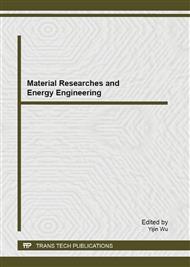p.513
p.519
p.524
p.530
p.536
p.543
p.549
p.556
p.560
Comparisons of Alcohol Blending Fuels' Emission from a Laboratory Gasoline Engine
Abstract:
This study is aimed at examining environmental impacts of exhaust emissions imposed by various alcohol blending fuels. The tested fuels are 0%, 5%, 10%, 15% and 20% blending of methanol, ethanol or butanol alone. Rotation speeds of engine tests were controlled at 1500, 2500 and 3500 rpm to simulate slow, normal and fast speeds of vehicle driving. Gaseous emissions from engine exhaust were collected to determine the concentrations of CO, NOx, HC, BTEX, formaldehyde and acetaldehyde. Most alcohol blending fuels were found able to lower regulated emission of CO, NOx and HC as well as toxic constituents of BTEX more or less. Adversely, alcohol combustion in the engine could result in the formation of formaldehyde and acetaldehyde. Environmental impact on the release of formaldehyde should be aware and carefully controlled with the use of various alcohol blending fuels.
Info:
Periodical:
Pages:
536-542
Citation:
Online since:
September 2013
Authors:
Keywords:
Price:
Сopyright:
© 2013 Trans Tech Publications Ltd. All Rights Reserved
Share:
Citation:


